The Russian airstrike on the maternity hospital in Mariupol on Wednesday, as well as the artillery shelling they have carried out in Kharkiv and across the country of Ukraine in recent days, tells us all we need to know about how Russia has chosen to fight this war. The Washington Post published a story on Wednesday with photographs as well as a minute and a half video of the damage done to the hospital. A man with a cell phone or video camera moves through the wreckage monotonously describing the scene in Ukrainian. As he walks through one wrecked hospital room after another, it's like he can’t believe what is in front of him: “One bomb. One bomb,” he exclaims over and over.
I know I put up a photograph of the crater at the maternity hospital yesterday, but I want to show a different one to illustrate the cruelly efficient targeting Russia is employing in this war.
From this angle, the crater can be seen to be nearly circular in shape, indicating that it was made by a bomb dropped from an airplane. If it had been caused by an artillery round, the hole in the earth would be smaller and oblong in shape because the impact of artillery is at an angle.
The photo below shows the extensive damage done to the front of the hospital closest to the place where the bomb struck. The crater can be made out as a depression where the ground begins to fall away on the other side of the man with the backpack. The deep part of the crater is out of sight to the left. The building on the right was closest to the bomb strike and took most of the direct blast.
Seen from inside one of the buildings, the crater is the darker area in the background to the left.
The bomb the Russians used, which I believe was a KAB-1500 L, is a laser-guided “smart” munition, which means that the pilot of the jet aircraft carrying the bomb put crosshairs on the target that aimed the laser guiding the bomb. The reason the pilot put the crosshairs on a spot in a central area of the U-shaped hospital was because the bomb’s size, more than 3,000 pounds, created a large enough blast area to damage all three buildings at once.
If the Russian jet had dropped the bomb directly onto one of the hospital buildings, the concrete structure of the building would have absorbed most of the blast, demolishing that building but not doing as much damage to the other two. A single Russian bomb was able to completely knock the hospital out of operation.
Photos taken inside the hospital show just how much damage that bomb did: equipment scattered, beds turned over, glass everywhere, but walls still standing.
This photo from outside shows all the windows blown out and walls pock-marked by shrapnel from the bomb. All three buildings in the complex are intact but so heavily damaged they can no longer function as a hospital.
Here is an example of what happens when a bomb is dropped directly on top of an apartment building. Notice that the part of the building that the bomb hit is obliterated, while the other part of the building is still standing, if heavily damaged.
The photograph below shows how different is the damage done by artillery shelling. The building on the left took a direct hit from an artillery round destroying its roof and top floor. The blast from that explosion damaged the rest of the building and the other buildings in the L-shaped complex. More rounds struck the ground around the cars and did further damage. If the building had been struck directly by one of the laser-guided bombs, the entire structure would have been reduced to rubble. No walls would be standing, and it would not be recognizable as the apartment building it apparently is.
The Pentagon announced on Wednesday that Russia has used more than 700 surface-to-surface missiles in its attack on Ukrainian cities. The mayor of Kharkiv said today that his city had suffered 89 “strikes” by the Russian army over the last 24 hours. The New York Times reported late today that the Russian military has launched attacks on three new Ukrainian cities: Dnipro in the East and Ivano-Frankivsk and Lutsk in the West. Russia appears to be doubling down on its attacks on civilian areas, shelling Moshchun, a suburb of Kyiv, as they try to push their forces closer to the capital.
From combing through every story and photograph I could find, the Russian artillery, missile, and bombing strikes are almost exclusively on civilian homes, businesses, schools, hospitals and commercial centers of cities and suburbs. The reason the Russians are for the most part using artillery and missiles is that they are less expensive. American Laser-guided bombs like the Russian one dropped on the maternity hospital, the JDAM GBU-31 and the GBU-12 Paveway, cost about $25,000 to $40,000 each, giving us an idea of what the Russians must spend on theirs. Similarly, an American 155 mm artillery shell costs about $400. Russian shells cost about the same. By shelling the cities with artillery, the Russian military can save money while doing a maximum amount of damage. With economic sanctions beginning to crush Russian financial and industrial resources, they’re going to need to save every kopek they can.
President Zelensky last night was livid at the Russian strike on the maternity hospital in Mariupol: "A children's hospital. A maternity hospital. How did they threaten the Russian Federation?" he said during a televised address. "What kind of country is this, the Russian Federation, which is afraid of hospitals, afraid of maternity hospitals, and destroys them?"
There is an old military saying that shelling and bombing civilians “has never broken the enemy’s will to fight.” If there are exceptions to this rule, I don’t know of them. The Ukrainian military was not a threat to the nation of Russia, and neither are the hospitals and schools and civilian neighborhoods they have rocketed and shelled with artillery and bombed.
Why Putin and his military have either chosen or ended up fighting the war this way is a subject I will address in days to come.
Stay tuned.



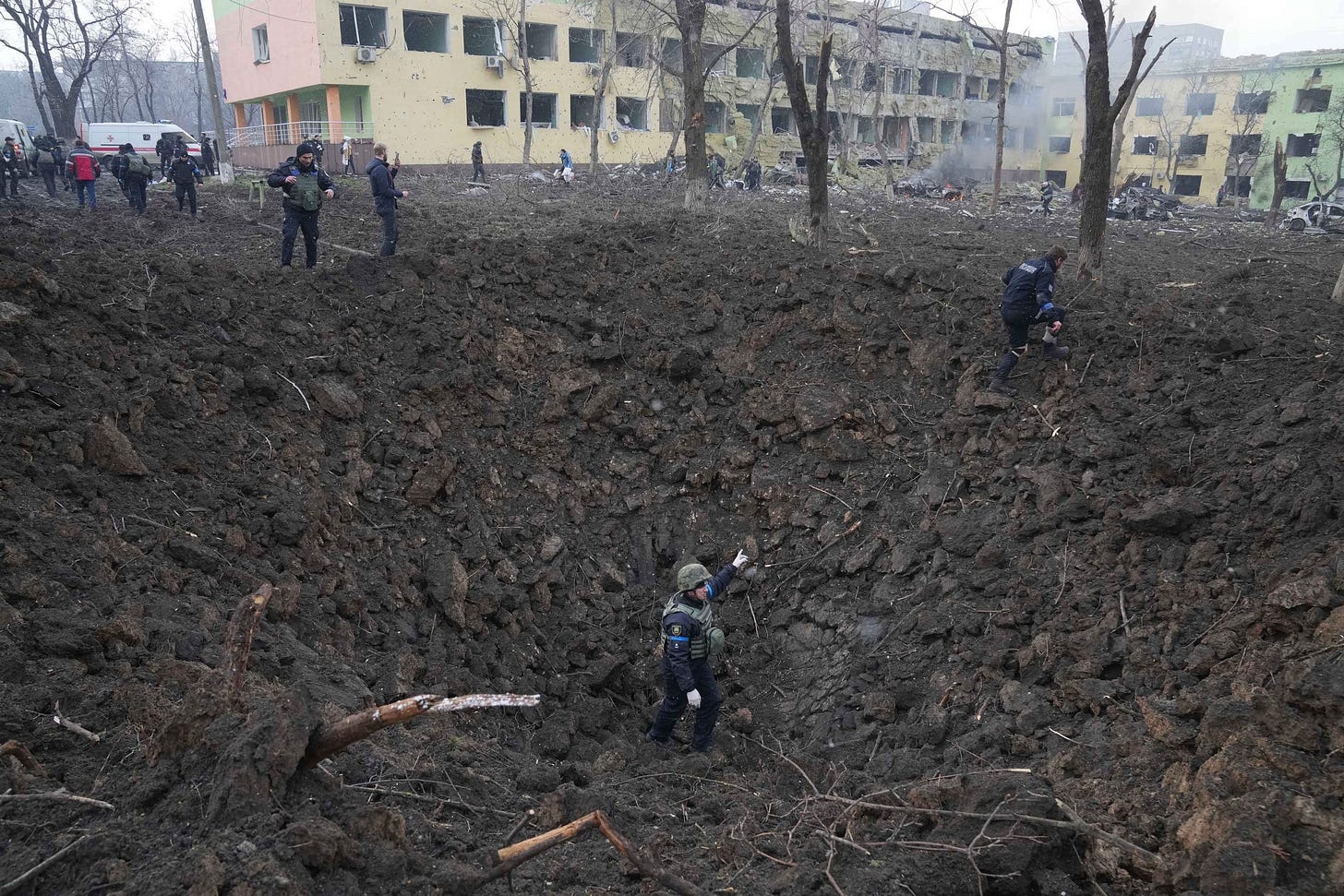
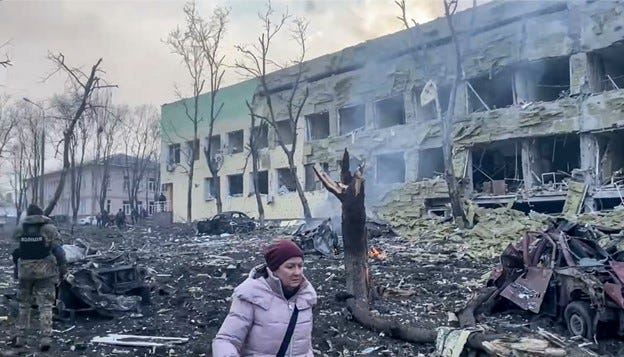
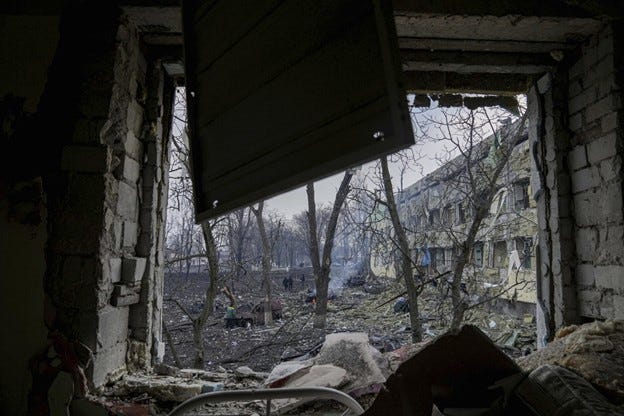
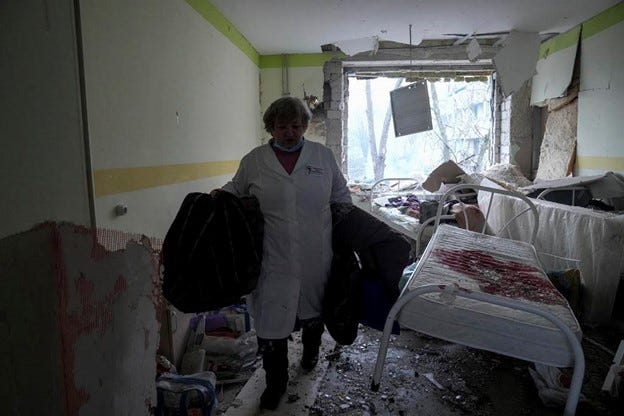
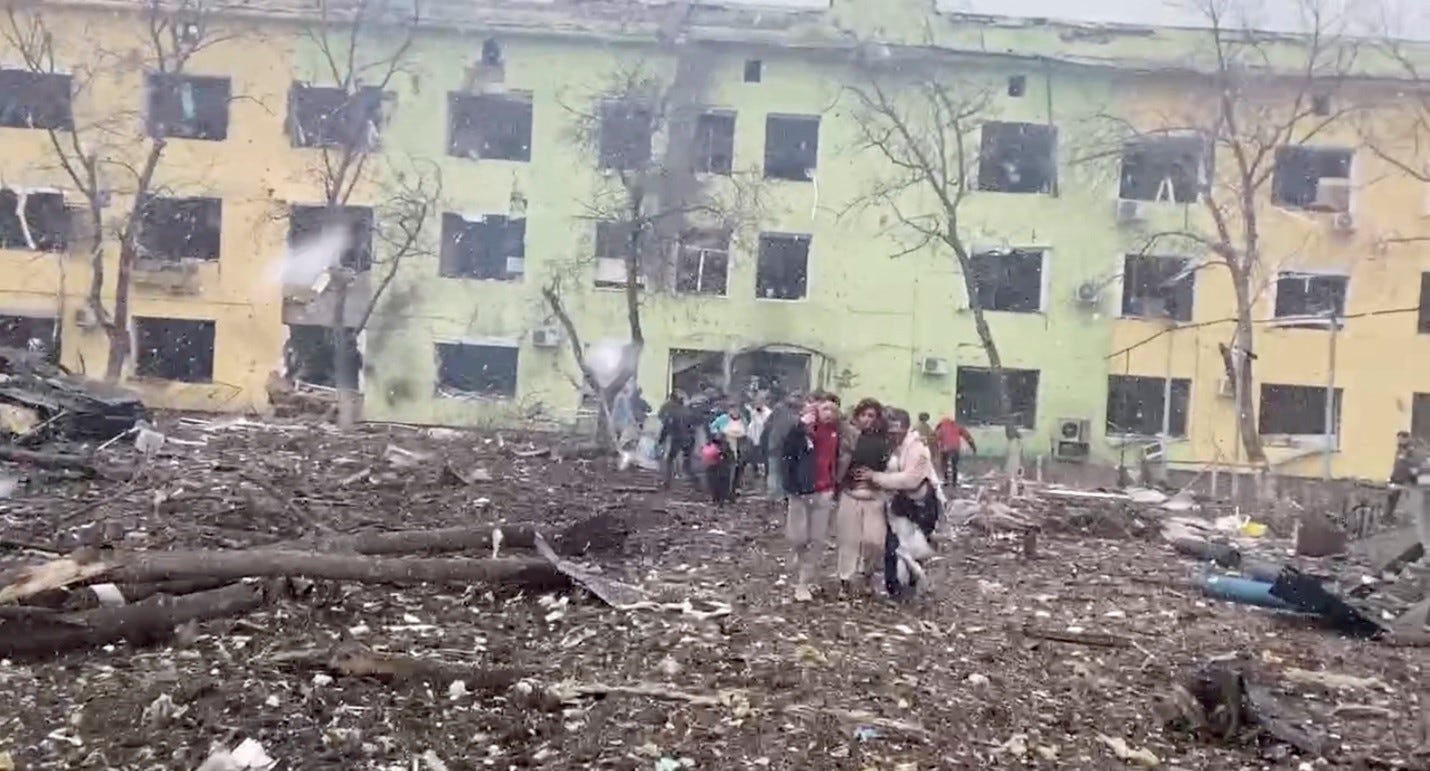
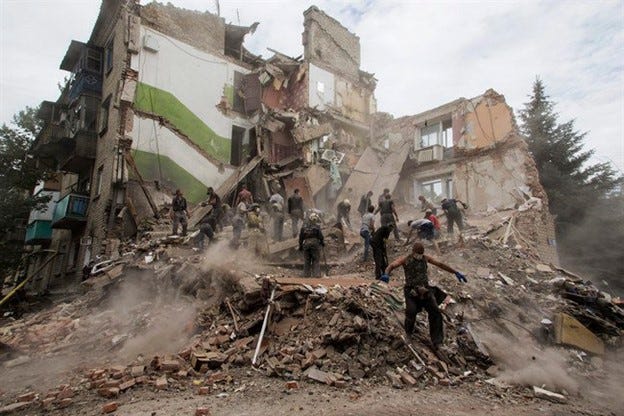
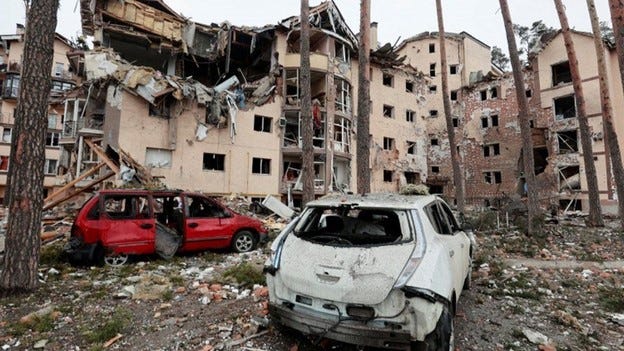

What Putin is doing is ghastly crimes against humanity. Someone needs to put him down. Now.
Trump and pro Putin allies scampering like the cowards we watched in action for many long years.